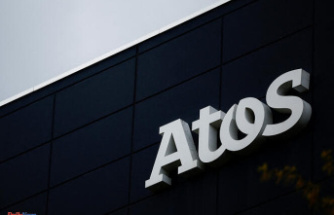“Doctor Luisa” is one of the most popular Ghanaian influencers in the country. A dental surgeon by profession and mother of two children, she is the wife of a famous singer, Stonebwoy. Back from school, weekends, Christmas parties... In front of almost a million followers on Instagram and Tiktok, Luisa Satekla does not hesitate to show her children eating a bowl of porridge made from Cerelac .
“Cerelac is always there to provide my children with the nutrition they need,” we can read in the description of a photo of their snack posted on social networks. Luisa Satekla is one of the many promotional faces of infant milks from the Swiss multinational Nestlé.
From Dakar to Djibouti, from Lagos to Cape Town, Cerelac and Nido powdered infant milks are displayed everywhere on billboards in African capitals and occupy a large space on supermarket shelves. Thanks to these two brands, the Swiss giant controls 20% of the baby formula market: Cerelac, the world number one, alone achieved a sales figure of almost a billion euros in 2022.
Behind this success, the Swiss company applies a strategy where products marketed in African countries contain high levels of added sugar, while those sold in Western markets contain little or no sugar. A "double standard" revealed by the Swiss association Public Eye and the International Action Network for Baby Food (Ibfan), which laboratory examined 115 products marketed in Nestlé's main markets in Africa, Asia and Latin America.
Solid popularity
Their findings were published April 17 in an investigation titled “How Nestlé is getting children addicted to sugar in lower-income countries.” “It seems that for Nestlé, all babies are not equal,” summarizes Laurent Gaberell, co-author of the report, joined by Le Monde. »
“In Senegal, Nigeria or South Africa, all [Nido brand] products for children aged 1 to 3 years contain added sugar,” the report notes. The authors believe that the same situation prevails across much of the continent, Ivory Coast and Ghana included, where IBFAN was unable to collect data but where the business strategy is similar. The objective, according to Nigel Rollins, scientist at the World Health Organization (WHO), cited by Public Eye, would be to accustom children very early to a high level of sugar. “From a nutritional point of view, there is no reason to add sugar to baby food,” recalls Laurent Gaberell. Nestlé’s sole objective is to create addiction, get children addicted to its products and increase its sales. »
Nestlé infant milks enjoy solid popularity throughout West Africa, thanks to an aggressive marketing strategy where influencers are now intruding into the kitchens of housewives as well as sports enthusiasts and sculpted bodies. Like the Guinean TikToker Maria Officiel, who guarantees her 2.7 million fans “weight gain in five days” thanks to Cerelac and Nido, whose logos are displayed continuously in her posts.
“Is it dangerous? », worries one of his followers in the comments. “No, it’s for the baby, so it’s okay, go for it! », added another. With strong bicep emoticons, the Senegalese influencer “Djilly roi du soap” also praises “bu baax weight gain” (“excellent”, in Wolof) thanks to Nido and Cerelac porridge to his 125,000 subscribers.
“Hidden sugars”
“By promoting Cerelac products through influencers and health professionals, Nestlé violates the WHO international code,” denounces Laurent Gaberell. The WHO International Code of Marketing of Breastmilk Substitutes has prohibited the advertising of such products since 1981.
He was adopted following a Nestlé baby formula scandal in the 1970s, known as the "Baby Killer." The multinational was already accused of promoting breast milk substitutes in developing countries, which are harmful to the health of infants, to the detriment of breastfeeding.
The revelation of this “hidden sugars” affair was perceived differently in the African countries concerned by the Public Eye investigation. In Ghana, as in Ivory Coast which does not have consumer associations, civil society has not reacted. Questioned at the exit of a convenience store in Abidjan, the young mother of a two-year-old boy shrugs her shoulders. She was not aware of this, she admits, but this news will not be enough to change her consumption habits.
“Cerelac products taste good, my mother gave them to me when I was little and I now give them to my son,” she says. I never noticed that there was too much sugar, it’s been the same taste for generations. And then Nestlé is a big company, these are products that are sold all over the world… For me, we can trust them. » In Senegal, only informed circles and scientists like the neurologist Amadou Gallo Diop, who has been warning about the harm of added sugars for years, have been concerned. “The danger is to accustom these children leaving the maternal womb to these circuits which are harmful to the body,” emphasizes Dr. Diop. These added sugars are addictive and travel the same neural highways as drugs. »
The new Senegalese ministerial authorities, elected on March 24, seem overwhelmed by this health scandal. The rare calls from consumers to withdraw Cerelac and Nido products are brushed aside. “We are not doing populism but regulation,” says Dr. Oumy K. Ndiaye Ndao, director of the Pharmaceutical Regulatory Agency (ARP). Nestlé informed us last week in a letter that it complied with the regulations. »
The multinational concedes “slight variations”
The supervisory authority created in 2022, however, promises imminent inspections. “The ARP is no match,” says a well-informed source. In theory, this independent authority has the power of control and referral to justice. In theory, it can inspect batches imported at the autonomous port of Dakar. But customs takes a dim view of it, because the port is their territory. »
Contacted by Le Monde, Nestlé assures that in “Central and West Africa, the addition of sugars in our range of infant cereals is done in compliance with the strictest local and international regulations”, which include “respect labeling requirements and thresholds for carbohydrate content, which include sugars.”
The multinational concedes “slight variations in recipes around the world”, but adds that their “milk and cereals for infants and young children are enriched with vitamins and minerals such as iron to combat malnutrition in Central and Western Africa. 'West ".
An argument that Laurent Gaberell is outraged by. “We're not talking about slight variations in recipes! », recalls the expert. Levels of added sugar are very high: 6.8 grams per serving in Nigeria, while the same product is sold without added sugar in Europe, that's huge! » As for the argument of malnutrition, Mr. Gaberell considers it “completely unfounded”: on the contrary, the WHO recommends reducing sugar intake to less than 5% of the total energy intake.
The influence of lobbyists
Despite the ethical and public health issues raised by Public Eye, Nestlé's practices are legal, because national laws in West and Central Africa are particularly lax. These are based on the standards established by the International Code of Marketing of Breast-milk Substitutes, developed in 1981 by the WHO, and by the Codex Alimentarius, a set of non-restrictive standards on agri-food and nutrition established by an international commission under the aegis of the Food and Agriculture Organization of the United Nations (FAO) and the WHO.
“However, Codex Alimentarius standards allow the addition of sugar to baby foods and do not even require manufacturers to declare the added sugar content of their products,” continues Laurent Gaberell. The reason Codex standards are so permissive can be summed up in one word: lobbying. The industry has enormous influence at Codex, it is present on every floor and in every room where decisions are made. » During a recent review of the standard for growing-up milks, industry lobbyists represented more than 40% of participants.












